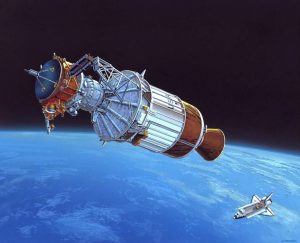- This topic is empty.
-
AuthorPosts
-
24/06/2025 at 13:33 #5121
In an era marked by rapid urbanization and environmental challenges, the quest for the best transportation system has become a focal point for policymakers, urban planners, and citizens alike. The ideal transportation system is not merely a means of moving people and goods; it is a complex network that integrates efficiency, sustainability, accessibility, and technological innovation. This post delves into the multifaceted dimensions of transportation systems, evaluating various models and their implications for future urban landscapes.
1. Defining the Criteria for the Best Transportation System
To determine what constitutes the best transportation system, we must first establish a set of criteria that encompasses various aspects of urban mobility:
– Efficiency: The system should minimize travel time and costs while maximizing throughput. This includes optimizing routes and schedules to reduce congestion and delays.
– Sustainability: A focus on reducing carbon emissions and promoting eco-friendly modes of transport is essential. This includes the integration of electric vehicles, public transit, and non-motorized options like cycling and walking.
– Accessibility: The system must cater to all demographics, ensuring that transportation is available to everyone, including those with disabilities, the elderly, and low-income populations.
– Safety: A robust transportation system prioritizes the safety of its users, reducing accidents and enhancing the overall security of travel.
– Technological Integration: The incorporation of smart technologies, such as real-time tracking, autonomous vehicles, and data analytics, can significantly enhance the user experience and operational efficiency.
2. Analyzing Different Transportation Models
A. Public Transit Systems
Public transit systems, including buses, subways, and trams, are often hailed as the backbone of urban transportation. They offer a high-capacity solution that can significantly reduce the number of private vehicles on the road, thereby decreasing traffic congestion and emissions. Cities like Tokyo and Paris exemplify successful public transit systems that are efficient, reliable, and widely used. However, challenges such as funding, maintenance, and the need for expansion can hinder their effectiveness.
B. Active Transportation
Active transportation, which includes walking and cycling, is gaining traction as a sustainable alternative to motorized transport. Cities that prioritize pedestrian-friendly infrastructure and dedicated bike lanes, such as Copenhagen and Amsterdam, have seen significant health and environmental benefits. However, the effectiveness of active transportation is often limited by urban design and safety concerns, necessitating comprehensive planning and community engagement.
C. Ride-Sharing and Micro-Mobility
The rise of ride-sharing services like Uber and Lyft, along with micro-mobility options such as e-scooters and bike-sharing programs, has transformed urban transportation dynamics. These services offer flexibility and convenience, particularly in areas poorly served by public transit. However, they also raise concerns regarding traffic congestion, regulatory challenges, and equitable access.
D. Autonomous Vehicles
The advent of autonomous vehicles (AVs) promises to revolutionize transportation systems by enhancing safety and efficiency. AVs can reduce human error, optimize traffic flow, and provide mobility solutions for those unable to drive. However, the widespread adoption of AVs is contingent upon technological advancements, regulatory frameworks, and public acceptance.
3. The Role of Integrated Transportation Systems
The best transportation system is not defined by a single mode of transport but rather by an integrated approach that combines various elements into a cohesive network. Cities like Singapore and Barcelona have successfully implemented integrated transportation systems that facilitate seamless transitions between different modes of transport. This holistic approach not only enhances user experience but also maximizes the benefits of each mode, leading to a more sustainable and efficient urban environment.
4. Conclusion: Towards a Sustainable Future
In conclusion, the best transportation system is one that embraces a multifaceted approach, prioritizing efficiency, sustainability, accessibility, safety, and technological innovation. As urban populations continue to grow, the need for effective transportation solutions becomes increasingly critical. By learning from successful models around the world and investing in integrated systems, cities can pave the way for a sustainable future that meets the needs of all citizens.
-
AuthorPosts
- You must be logged in to reply to this topic.


